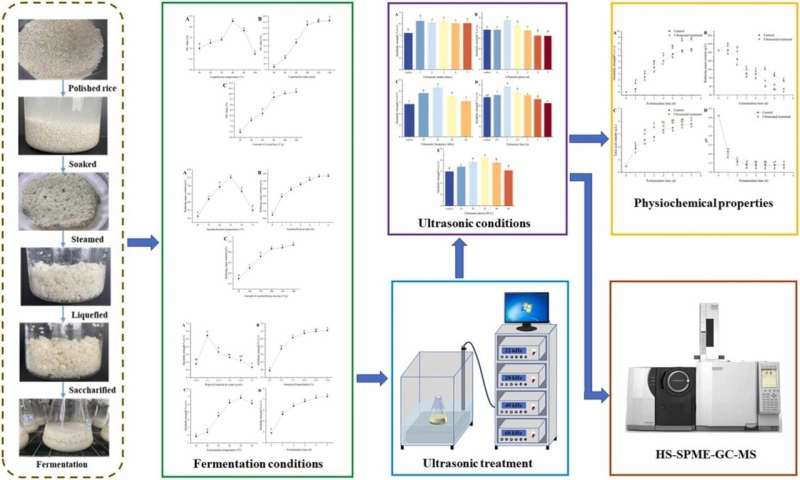This article has been reviewed according to Science X's editorial process and policies. Editors have highlighted the following attributes while ensuring the content's credibility:
fact-checked
proofread
Examining the effects of ultrasound-assisted fermentation on Chinese rice wine

Traditional Chinese rice wine (RW) has been popular in China for thousands of years. The brewing process involves simultaneous saccharification and solid-state fermentation using mixed saccharifying starters, such as wheat starter and distiller's yeast. However, the brewing medium contains a diverse array of microorganisms, and the quality of starters varies across regions.
This leads to an unpredictable fermentation process and inconsistent RW product quality. In addition, traditionally fermented RW has several limitations, including thin taste, long brewing time, slow product conversion, and limited application of high technology. Although some progress has been made in addressing the limitations of traditional brewing, the need for further research and innovation remains.
Ultrasound, as a new non-thermal physical processing technique, has extensively been utilized to overcome the drawbacks of conventional fermentation. Some studies have shown that the application of ultrasonic technology in brewing can enhance fermentation efficiency and quality. To date, research on ultrasound-assisted fermentation has mainly focused on the pure culture fermentation process in the laboratory.
A new study published in Food Physics established an enzymatic brewing process for RW by simulating actual production. Adding α-amylase to liquefy the starch is hydrolyzed from long-chain starch to short-chain dextrin and oligosaccharides to assist saccharifying enzyme in converting starch into fermentable sugar.
The researchers, based in China, analyzed the impact of ultrasound on the physicochemical properties and volatile compounds during the fermentation process. They found that concentrations of isobutyl acetate, ethyl butyrate, ethyl hexanoate, and phenethyl acetate exhibited significant increases of 58.03%, 107.70%, 31.84%, and 18.71%, respectively.
The findings suggest that using ultrasound in the brewing process could be feasible for simplifying the procedure, reducing brewing time, and enhancing the volatile flavor profile of RW.
More information: Jing Hao et al, Effect of ultrasound-assisted fermentation on physicochemical properties and volatile flavor compounds of Chinese rice wine, Food Physics (2023). DOI: 10.1016/j.foodp.2023.100006
Provided by KeAi Communications Co., Ltd.





















